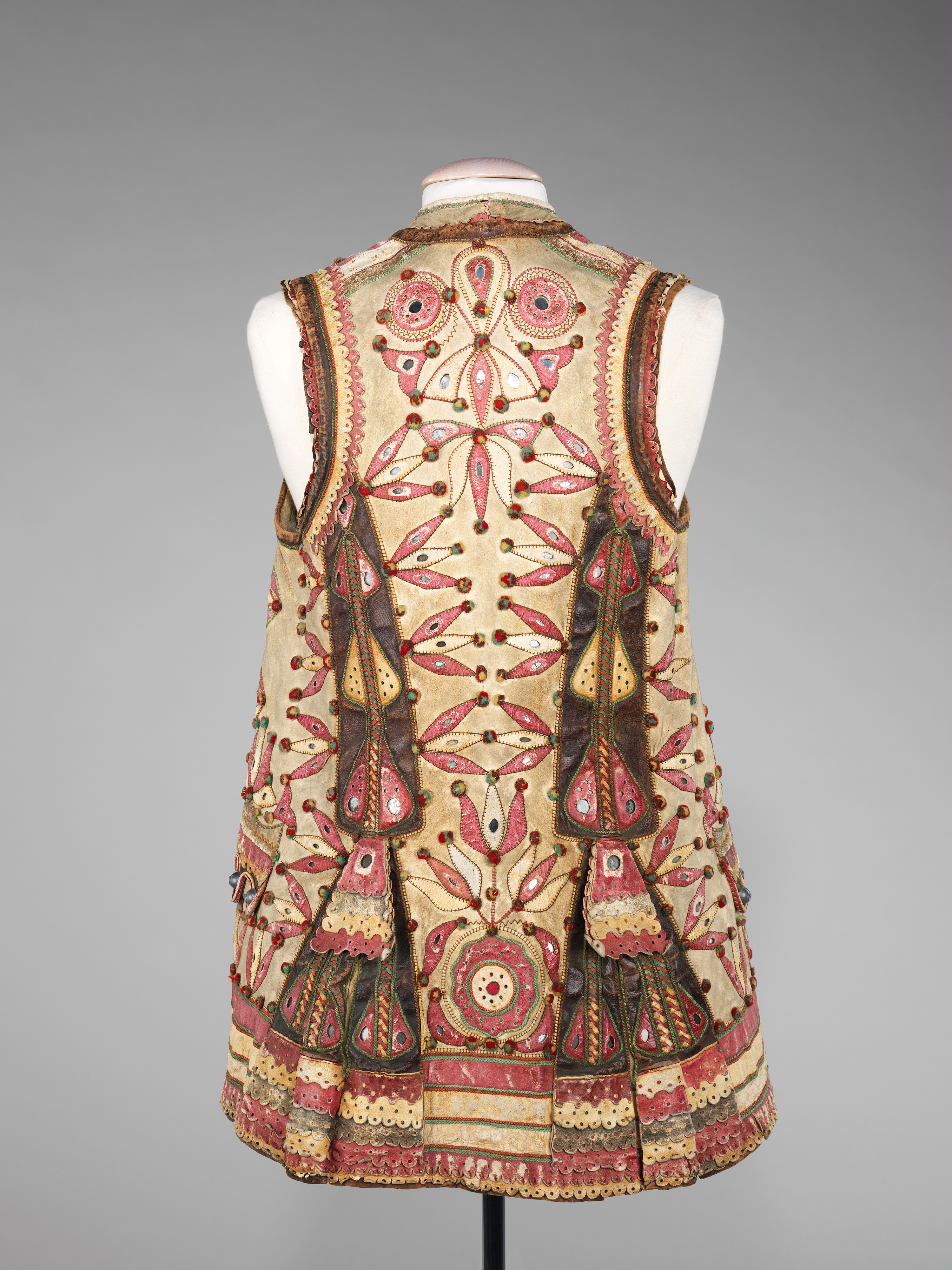Jacket
Not on view
This vest represents virtuosic surface decoration, incorporating many different materials and techniques. The colors, though faded with age would have been striking combined with the reflective surfaces of the mirrors. Mirrors have traditionally been used as talismans to ward off evil spirits, but also add to the overall brilliance of this garment. The region of Transylvania, in the eastern part of the Carpathian Basin is currently part of Romania, however in the 19th century when this garment was made it was under the control of the Kingdom of Hungary.
This object was collected by Stewart Culin (1858-1929) during a collection expedition in 1921. Culin was the Brooklyn Museum's first Curator of Ethnology, serving from 1903 to 1929. Possessing an insatiable curiosity and appetite for collecting objects of all kinds, Culin conducted over twenty worldwide collecting expeditions between 1901 and 1928. The trips covered American Indian territories, New England, Asia, India, Great Britain, and all of Eastern and Western Europe. The seven expeditions between 1917 and 1928 were specifically focused on collecting regional textiles and costumes from Eastern and Western Europe and, to a lesser extent, New England. Culin's goals for these trips were not just to expand the Museum's holdings, but also to preserve their cultural contexts. He did so through amassing photographs, notebooks, and ephemera which documented the social, commercial, and cultural circumstances surrounding their acquisition. His collecting philosophy embraced both rare and high-quality pieces as well as those which represented daily life or were of particular social or historical interest.
Due to rights restrictions, this image cannot be enlarged, viewed at full screen, or downloaded.
This artwork is meant to be viewed from right to left. Scroll left to view more.






